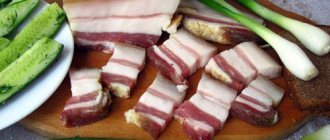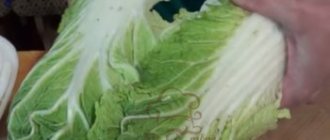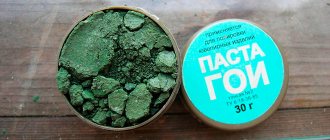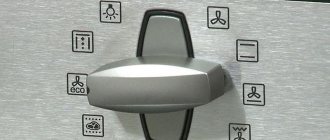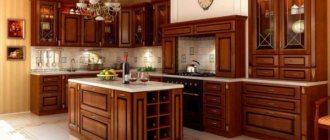Control methods
The designation of oven icons depends to some extent on the control method. The method of presenting the pointer also differs.
- Mechanical – here the number of marks is minimal. It is mandatory to indicate the degrees on the corresponding handle. The timer indicates intervals in minutes. And in order to accurately set the mode of an electric oven with mechanical control, symbols indicating operating parameters are placed around the handle.
- Electronic-mechanical - the difference here lies in the accuracy of setting the parameters. Both temperature and time are set with greater accuracy. The symbols in Ariston, Bosch, and Electrolux are almost the same.
- Touch - here symbols appear on the display of an electrical device - Bosch, Samsung, one by one, as a rule, this is an LED symbol. In this case, the panel itself may display symbols indicating a specific parameter, since each of them is activated in the same way - by pressing the touch panel.
Special abilities
Separately, it is worth noting the importance of having a cooling fan in ovens. The purpose of this mechanism is to cool the door and side walls of the oven. It is located between the control panel and the inner chamber of the oven. During cooking, drops of fat may penetrate the inside of the oven door glass. To combat such contamination, pay attention to the presence of an easily removable oven door: the door and glass should be easily removed without the use of special tools.
Designation of oven modes
The meaning of the icon is the same for any device - Ariston, Bosch, Gorenje. Both on the touch panel and on the mechanical panel they mean the same thing.
- A square with lines at the top means cooking using the top heater. This is the most popular option for both reheating food and cooking bulk foods.
- The same icon with the bottom line - heating using the lower heating element. Required if a baked crust is desired.
- A symbol with two lines - this means the simultaneous operation of the upper and lower heating elements. This mode is used for baking.
- A square with a fan symbol and a bottom line represents convection and heating from below. This is an option for pies and pizza.
- A combination of convection and upper and lower heating elements - with two lines, is used for cooking large dishes.
- The designations on an electric oven are Bosch and Ariston, and may include a grill icon if the device is equipped with such a function. Cooking under these parameters imparts a specific taste to the dish.
- Devices that include such a function as spit roasting, and this can be Bosch or Samsung, are also provided with the corresponding designation. The spit is included by default.
Symbols on the oven
On the mechanical version, these include temperature graduation and time indication. But for touch-sensitive electric ovens from Bosch or Electrolux, other conventional markers appear.
Activation of the corresponding parameter is carried out by clicking on the designation. Calling the required mode or setting the time is carried out after indicating which parameter is considered active.
- The clock icon indicates the ability to specify the cooking time.
- The bell is a well-known timer marker. It provides an audible signal when the cooking time has ended.
- Two vertical lines with an arrow pointing to the right indicate the ability to set the cooking time.
- The same icon, but with an arrow pointing to the left, means you can set the end time of cooking.
The corresponding symbols on the Ariston oven are shown in the photo.
Before purchasing any equipment, you should think about what innovations have appeared in it. After all, progress does not stand still. Every year, companies develop models supplemented with new and very useful functions. In ovens this is the convection mode.
How to adjust the temperature in a Hansa oven
Operating mode:
from 9:30 to 18:00 Mon-Fri
Our life is becoming more and more comfortable thanks to the constant improvement of technologies aimed at creating convenient and functional household appliances. This process also affected the production of ovens - the most important appliances, without which it is difficult to imagine a fully equipped kitchen. Innovative solutions are constantly emerging, aimed at maximizing the diversity of heat treatment methods. This significantly increases the controllability of the cooking process, and many of its components are automated.
The capabilities of modern ovens allow you to create culinary masterpieces at home, the preparation of which was previously only accessible to professional chefs. First of all, this is achieved by uniformly distributing the heating elements over the upper and lower surfaces of the internal chamber of the device. Various functions are also designed to help in creating complex dishes, making the oven a reliable assistant for both experienced and novice cooks. Your oven knows exactly how to sear, bake, grill and bake. With it you can always please yourself and your loved ones with varied, tasty and nutritious dishes.
What is convection mode in standard and mini ovens?
In order to understand what this mode is, you need to understand what convection is. Convection refers to the process of circulating warm and cold air inside the oven: warm air rises and cold air falls. This happens until the temperature inside it becomes the same.
WATCH THE VIDEO
Based on the above, it turns out that this function is available in every oven, and this is partly true. So what is a convection oven? It would seem that this is an ordinary oven, but in reality everything is not so simple, because convection in the oven can be different.
Types of convection
There are two types of convection: free and forced. The first, as mentioned above, is available in every oven, but the second is an additional mode. The role of the convector in this case is assigned to the fan, which is mounted in the rear wall. As a rule, it is switched on separately and runs on electricity. Let's look at the pros and cons of each type.
| Free | Forced | ||
| pros | Minuses | pros | Minuses |
| Presence in every model | Slow heating due to free air circulation | Fast heating achieved by the built-in fan | High price |
| Small price | Uneven cooking of food | Uniformly frying food | |
| Burnt bottom of baked goods along with unsuitable top | The bottom and top of the baked goods fit at the same time | ||
| There is no possibility to prepare multiple dishes | You can cook several different dishes using different baking sheets | ||
| The cooking result is unpredictable | The cooking result will always be amazing | ||
As can be seen from the table, forced convection in the oven is much better than free convection.
Subtypes of forced convection
The built-in convector in the oven can be either simple, the main task of which is to evenly distribute heat inside the oven, or distinctive. This may include:
- reinforced convectors provide fast flow of hot air;
- with a heating circuit equipped with additional heating elements;
- with a steam distribution function that allows you to cook the most healthy food possible (almost steamed, with a minimum amount of oil).
Each of these convectors is . For example, reinforced ones are especially well suited for roasting meat. In this case, a rapid flow of hot air promotes the formation of a crust, which in turn prevents the meat from drying out. Convectors with a heating circuit add heat to the oven, thereby allowing, if necessary, to evaporate excess liquid when baking dishes with tomatoes or zucchini.
Methods for determining temperature without a thermometer
If there are no documents left for the stove and it is not possible to determine the temperature in a gas oven by the numbers on the regulator, since there are no minimum and maximum heating parameters, you can use several simple but effective methods. Their main essence is to determine the temperature of the flame inside the gas stove at a certain position of the thermostat.
This is a kind of check with which you can make sure that the correct mode is selected for cooking certain dishes.
Paper
This can be plain white office paper or notebook paper. Newspapers, napkins and baking paper are not suitable for these purposes. The error in the indicators will be 5-10 °C. It is best to carry out the experiment several times to avoid gross errors and inaccuracies.
- The oven is turned on by setting the regulator in the desired position;
- After 10-15 minutes, when the oven heats up and reaches the desired parameters, a sheet of paper is placed inside. It should be placed on a baking sheet or wire rack in the area where food is usually located.
- You must wait until the paper begins to char. At this stage it is important to control the time. The table shows the ratio of temperature to the period of time that the sheet was inside the cabinet.
| t, °С | Time |
| less than 180 | more than 10 minutes |
| 180-200 | 5 minutes |
| 200 | 1 minute |
| 230-250 | 30 seconds |
| 250-270 | 15 seconds |
| 270-300 | 5 second |
If even after 15 minutes of being inside the oven the paper is not charred, but only slightly changed its color, then the temperature inside the oven is no more than 150 degrees.
Sugar
How to determine the temperature in an already working oven if food is loaded there. For example, there is a charlotte inside and there is a suspicion that the pie is browning too quickly. To do this, use lump sugar, which is placed on a sheet or foil and placed inside on a baking sheet or wire rack, in close proximity to the pie. The melting point of sugar is 180 °C. Accordingly, if the pieces begin to melt, it means the heating level inside the cabinet is higher than this indicator.
It doesn’t matter if lump sugar is missing, granulated sugar can easily replace it. Their melting points are exactly the same. Using both types of sugar, you can quite accurately determine in what temperature range the oven operates. Due to the higher density, lump sugar will melt with a slight delay, while granulated sugar will flow immediately. If the temperature inside the cabinet is very high, more than 200 ° C, both types of sugar will begin to melt instantly.
How can you find out the temperature in the oven without a thermometer, having only flour available? The method is as simple as the previous two. The only difference is that using flour you can determine the maximum heating of the oven:
- First, the baking sheet is covered with baking paper, onto which flour is poured in a small layer. The oven is turned on and preheated for 10 minutes, after which the baking sheet is placed inside. Next, it remains to detect the time after which the flour begins to change its color;
- if after 1 minute the flour has not changed color, the temperature is below 200°C;
- slight yellowing after 30 seconds – temperature about 200°C;
- turned sharply yellow after 15 seconds and gradually darkened - heating to about 250°C;
- a few seconds after placing the baking sheet in the cupboard, the flour turned black - the oven is working at maximum, the temperature inside is more than 280°C.
Despite the simplicity of the method, it has some features. So, for testing you should use only white flour, by which you can easily track the color change. The amount of flour should also be measured. If there is a lot of it, the darkening will be uneven and it will be difficult to determine at what point the flour has warmed up to its maximum temperature.
The oven is like a furnace: the principle of operation of the new mode
There is a special button on the stove panel for this purpose. After pressing it, the fan turns on, which accelerates the air flow, thereby helping to warm up the oven faster.
The convection mode in the oven undoubtedly has its advantages. One of them is improved air circulation, which allows you to achieve the desired results with a minimum of effort. Consider in comparison:
- in a conventional oven, with a baking sheet inserted, the bottom of the dish burns, but the top is not yet ripening;
- In an oven with a fan, even several inserted baking sheets will not interfere with the uniform cooking of any dish, including baked goods.
It is worth noting that as soon as the temperature inside the cabinet reaches the required limits, the fan will turn off on its own. Therefore, you should not be afraid of additional energy costs.
How to find out the temperature in the oven by marks
How to determine the temperature in the oven by marks, without a thermometer, if the minimum and maximum values do not fit into the “average” category? In addition, some models provide more precise temperature control and the number of divisions on the handle reaches 9 or 10 units. Others may have only 5 divisions and choosing the most accurate temperature is quite difficult. That is why manufacturers of some gas stoves include tables with their products that will help you figure out if the oven should be 180 degrees, how many units there are on the regulator.
A breakdown of the scale is also offered for other temperature regimes that are most popular in cooking.
tmin – 170, tmax – 266, number of divisions: 5
| Division on the control knob | t, °С |
| 1 | 170 |
| 2 | 230 |
| 3 | 236 |
| 4 | 253 |
| 5 | 266 |
tmin – 135, tmax – 270, number of divisions: 7
| Division on the control knob | t, °С |
| 1 | 135-165 |
| 2 | 150-180 |
| 3 | 170-200 |
| 4 | 180-215 |
| 5 | 205-235 |
| 6 | 220-250 |
| 7 | 240-270 |
tmin – 135, tmax – 250, number of divisions: 8
| Division on the control knob | t, °С |
| 1 | 135 |
| 2 | 150 |
| 3 | 165 |
| 4 | 180 |
| 5 | 195 |
| 6 | 210 |
| 7 | 230 |
| 8 | 250 |
tmin – 150, tmax – 280, number of divisions: 8
| Division on the control knob | t, °С |
| 1 | 150 |
| 2 | 160 |
| 3 | 180 |
| 4 | 200 |
| 5 | 220 |
| 6 | 240 |
| 7 | 260 |
| 8 | 280 |
tmin – 140, tmax – 280, number of divisions: 9
| Division on the control knob | t, °С |
| 1 | 140 |
| 2 | 150 |
| 3 | 160 |
| 4 | 180 |
| 5 | 200 |
| 6 | 220 |
| 7 | 240 |
| 8 | 260 |
| 9 | 280 |
Advice! It is best to place a suitable chart in the kitchen so that you can easily determine the temperature in your oven.
Built-in gas oven: with or without convector?
Most housewives prefer gas stoves and this is not without reason, because gas is cheaper than electricity. So what is convection? This is a regular gas oven, supplemented by a fan, usually powered by electricity.
Despite the fact that a stove with convection costs an order of magnitude more than a conventional one, it is best to give preference to it. A special icon will help you find out whether the gas oven you have chosen is equipped with the required function. It will also indicate what kind of convection in the stove: enhanced, with a contour or wet.
What does the convection icon look like?
There are special icons on the front panel of the oven that indicate all its functions. They are quite simple and straightforward. So the heating elements are marked with a dash, and the convector looks like a fan or an airplane propeller, so it’s not at all difficult to guess what kind of sign this is.
Tabletop electric oven with convector
Despite the fact that an electric oven with a fan often has two heating elements at once (top and bottom), it also has a significant drawback - uneven cooking. Baked goods, as well as other dishes, burn from the bottom and the far wall. To avoid such a result, the housewife has to constantly change the sides of the baking sheet and turn the dish itself over.
Convection in an electric oven will not only help avoid such troubles, but will also give the baked goods a rosy glow. Thanks to the fan, the heat in the oven spreads evenly, and not just around the edges. This is what allows you to get excellent results even when preparing several dishes at the same time.
Combined oven: grill and convector
The grill function has long been known to all housewives. But a grill with a convector is a completely new concept. The oven with convection and grill has the following advantages:
- no pre-defrosting of meat, this saves time for housewives;
- possibility of baking large pieces of meat;
- the formation of a crust that prevents juices from flowing out of the meat.
Comparison of measurement scales
If you have a passport for the stove and the operating instructions, it will not be difficult to determine how many degrees in the oven of your gas stove at a certain position of the control knob. This data is available in the relevant documents. If we are talking about a stove made more than 20 years ago, the instructions for which were lost in the last century, you have to rely only on average indicators, as well as your own experience.
Old-style gas stoves are not much different from each other. The maximum oven heating in these models is limited to 280 °C, the minimum – 150 °C. The scale of the adjusting knob has 8 divisions. Based on these parameters, we obtain markup with the following data:
- One division corresponds to approximately 20 °C;
- To get a heat of 200-220 °C (the optimal temperature for cooking meat and other dishes), the regulator knob should be at number 4-5. The biscuit is prepared at 180 °C, the handle is moved to position 3;
- It is impossible to create a temperature of less than 150 °C using the regulator. But if you need to reduce the heat, for example, to prepare meringues or dry herbs, open the oven door slightly and thus regulate the heat.
These parameters are average and applicable to most gas stoves, but are not a direct guide to action. In addition, long-term use of kitchen appliances may make certain adjustments; the heat level may drop significantly or significantly exceed the specified parameters.
Tip: if there is no thermometer inside the oven, it is recommended to experimentally check the accuracy of the thermostat at least once a year.
Mechanical control panel
Conventional rotary knobs are most often found on inexpensive ovens with a small number of modes, as well as on gas models, since they do not have rich functionality. The number of icons here is usually small and it will be easier to understand them. The easiest way to navigate is with the indicators of a timer or thermostat, around which the manufacturer has simply prescribed the heating temperature. You will have to get acquainted with other icons.
The most popular designations:
- “Light” – turns on the lighting in the oven for visual control of food preparation.
- “Snowflake” or “Snowflake with drops” – defrosting food.
- A horizontal line at the top of the pictogram, at the bottom, or simultaneously in two parts of the square - respectively, heating by the upper, lower heating element, or both at once.
- If the lines are dotted, this is a low-temperature or gentle cooking mode at +70..+120 °C.
- The fan symbol indicates convection mode, that is, blowing hot air into the chamber. As a rule, it is supplemented by the position line of the working heating element.
- The wavy line or teeth symbolize the grill. An additional horizontal stripe above the icon is the fast grilling mode, and the convection icon corresponds to the turbo grill program.
- Double-sided horizontal arrow with a pair of arms – skewer.
When using convection in the oven, it is recommended to choose a heating temperature 20-40 °C lower than in the case of conventional modes.
Sometimes on the oven panels there are simple and recognizable symbols of modes for specific dishes, for example, for baking pizza, bread or pastry. It’s easy to guess the purpose of the selected option, but its characteristics (cooking time and heating temperature) are best clarified in the instructions.
Electromechanics
This control panel allows you to more accurately set and control the operating modes of the oven. That’s why we use our own icons here – in much larger quantities. And although different manufacturers may have their own set of icons, large and most popular brands like Siemens, Bosch, Electrolux and Hotpoint-Ariston chose to simplify the task for their customers and adhere to approximately the same designation system.
- A horizontal line with a wavy “stream of steam” rising above it (one or three) – maintaining the temperature of ready-made dishes at +60..+100 °C.
- A pie shaped with three vertical wavy lines is the so-called Gratin mode, which allows you to create a brown baked crust on the surface of the food.
- The same three waves, but on their own, or the “Sun” icon indicate the drying mode.
In addition, on the panels of multifunctional ovens you can find icons corresponding to such modes as: heating plates before serving, and starters (“Glass”), proofing yeast dough, sterilizing canned food.
Today, quite a few additional icons have appeared for various convection modes. The following symbols may appear next to the fan:
- LTC – Slow cooking, which results in juicier, larger roasted cuts of meat.
- Three drops – additional processing of products with hot steam.
- “Leaflet” is the so-called eco mode with minimal energy consumption.
Electronic PU touch screen
LED symbols look attractive and intriguing on the screen of such a panel. And all because there can be an unlimited number of them, which is what manufacturers take advantage of, coming up with new designations for the cooking modes being introduced. In addition, the operating features of the sensor allow you to set additional options for individual programs, which are also displayed in the form of icons.
- “Clock” or two vertical stripes with an arrow pointing to the right indicate that the cooking time can be set for the selected mode. If the arrow points to the left, it means you are required to set the end time for the oven.
- “Bell” – a sound notification about the end of the program and the readiness of the dish.
Today, in household appliances stores, there is a sufficient variety of ovens. For those who have decided to change their oven to a new model, it is useful to know the basic oven modes for cooking. But as practice suggests, housewives who already have new appliances do not use some oven operating modes for the simple reason of ignorance of their mode of operation.
Basic modes
The basic cooking modes in an oven differ little in different models from different manufacturers.
The main modes of the Bosch oven, as well as Electrolux, Hansa, Gorenje, can be separated into a separate list, since the heating modes of ovens can have additional functions, which depends on the model and, of course, increases the cost of the equipment:
- top/bottom heat, the temperature of different models can vary from 40 to 290 degrees. Heat comes from above and below and is used for cooking pies, casseroles, and lean meat (at medium level). This mode is also called statistical;
- bottom heat with a temperature of 40 to 290 degrees, convenient for canning, frying or baking dishes;
- hot air mode (convection). With this mode, baking is possible on a maximum of three levels, if the size of the oven allows (experts recommend using two levels). Due to the fact that in this mode the fan turns on, it distributes the heat evenly throughout the oven, the cooking process is reduced by no less than 25%, this mode is used quite effectively if the dish is almost ready, but the hostess wants a “brown” crust. Ovens with convection are called multifunctional. The fan is used in two modes - for general heating and for the lower heating element;
- Basically, almost all modern models have in their arsenal such oven heating modes as grill. It happens:
- small (for cooking thin foods, such as toast, in the central part);
- large (for cooking a large number of thin pieces located throughout the grill, also for preparing hot sandwiches);
- turbo grill (it is used for frying large pieces of meat or whole poultry on one of the levels; in addition, it is suitable for forming a crispy crust during baking or frying).
Cleaning
There are different ways to clean your oven. A steam or hydrolysis cleaning system will allow you to clean the oven without unnecessary energy costs without cleaning agents. All you need to do is pour 0.5 liters. water into a baking tray, place it on the lower level, turn on the lower heat and set the heating temperature to 100 C. Catalytic cleaning is based on the principle of splitting fat into carbons and water, cleaning the oven at the same time as the cooking process. A very convenient system for those who cook often. Pyrolytic cleaning is used after cooking. With this system we raise the temperature to 500C inside the oven and turn the fat into ash in 1.5–2 hours.
Ilya Klesha, Training Manager of the household appliances manufacturer Hansa
The interior of a modern kitchen these days cannot be imagined without built-in appliances and the main highlight of the kitchen - the oven. The main advantage of an independent oven is that it can be placed in a place convenient for you, at any height, regardless of where the hob is located. The Hansa built-in ovens presented in the catalog allow you to verify the versatility of this indispensable element of a modern kitchen interior. These samples of electric ovens have standard dimensions of 60 cm, which allows you to place them in the furniture row of your kitchen space without any particular difficulties. At the same time, the ovens offer a significant cabinet volume of 58 liters. The technical characteristics and functionality of Hansa built-in ovens open up wide possibilities in cooking. They are convenient and safe to use. Most models have Child lock protection. The convection system that the ovens are equipped with evenly distributes heat in the working space and your dishes turn out evenly fried and with a crust. Most of the models presented have a grill function, as well as a spit, which makes it easy to cook large pieces of meat. The catalytic cleaning system allows you to easily get rid of fat on the inner surface of the oven, and particularly difficult stains can be easily removed using special cleaning products. The stylistic variety of Hansa built-in ovens will allow you to choose a model - from retro to hi-tech, which matches the overall style of your interior. Hansa ovens are the soul of your kitchen.
Additional modes
The oven mode switch is always located on the front panel, so when cooking, the main thing is to know all the symbols so that cooking in the oven brings you only pleasure. On the mode switches of the Electrolux, Ariston, Gorenye ovens, in addition to the main modes, there are also additional ones (for more expensive models):
- “Pizza” mode, baking on the same level with a crispy crust. If you need to prepare deep-frozen dishes (pizza, French fries or strudel), there is no need to defrost them first. The heat will be from 35 to 250 degrees from the heating element located in the rear wall;
- “Defrosting” at a temperature of 35-65 degrees occurs with the help of a fan that distributes warm air throughout the product;
- Some models, for example, from Bosch, have such a mode - “keep hot” from 65 to 95 degrees;
- Tangential cooling, which is designed to cool the oven;
- “3D cooking” is a mode of the latest technologies, in which the dish during cooking is enveloped in three-dimensional steam, which allows not only to bake it efficiently, but also to preserve all its beneficial properties.
Inner space
The presence of convection is more mandatory than desirable when choosing an oven. Convection is a fan and ring heater installed on the back wall of the oven. They are designed to distribute hot air evenly. When preparing baked goods, convection is especially necessary because it helps to achieve the best results. The grill function is intended for cooking meat on the grill and “grilled chicken” with a golden brown crust. It is a heating element located in the upper part of the oven. Trays and a frying grid are installed on telescopic guides. If you need to add salt, pepper or check the degree of readiness of the dish, there is no need to support the baking sheet or grill with one hand - the telescopic guides will do it for you. The temperature probe function will be useful for fans of meat dishes: it accurately determines the temperature inside the dish and automatically turns off the oven exactly at the moment when the dish is ready. The volume of the oven does not play a significant role in cooking, but if its volume is more than 65 liters, it will be much more convenient to use such an oven.

